A well-designed organisational model can help a business run more effectively and efficiently. There are many different ways to design an organisational model, and the best approach for your business will depend on your specific needs and goals.
Table of Contents
What is Organisational Modelling?
Organisational modelling is defined by the BABOK guide
Organisational modelling is used to describe the roles, responsibilities, and reporting structures that exist within an organisation and to align those structures with the organisation’s goals.
Organisation charts are common and you can see them in most organisations as they provide a helpful visual guide to the organisation. However, they do not provide as much information about how the organisation operates, as they could.
An organisational model (as a business analysis technique
An organisation model can be created for every level in the structure. It is a team model: the model of all the people who report to the same person. The roles in the model are divided between operating work (the work that needs to be done to deliver value to the customers or beneficiaries of team) and support work (the work that is done to support those people doing the operating work).
A visual representation of an organisational model can help with defining:
- The scope of the group of staff.
- The formal relationships between staff and reporting lines.
- The functional role for each staff.
- The interfaces between business functions.
What are the Elements of an Organisational Model?
The elements to consider for an organisational model are:
- Type of organisational model – value chain, units , matrix, functionally-oriented, market-oriented.
- Roles – a role should have a role description defining the skills and responsibilities.
- Interfaces – Each organisational unit has interfaces with other organisational units. Interfaces (interactions) may be in the form of communication with people in other roles and work packages that the organisational unit receives from or delivers to other units.
- Organisational charts – The fundamental diagram used in organisational modelling.
- Influencers – whilst the organisational chart represents the formal structure and reporting lines. There may be influencers, a person everyone goes to for information, direction and advice.
Organisational Model – Support Work
The support work for an organisational model can be one of four types:
- Policy – sets rules and governs them.
- Champion – sells ideas and better ways of working.
- Shared Service – provides services in a customer / supplier relationship.
- Core-Resource – provides resources and inputs as a partner to the operating units.
Each type of support work has a different relationship with the operating units.
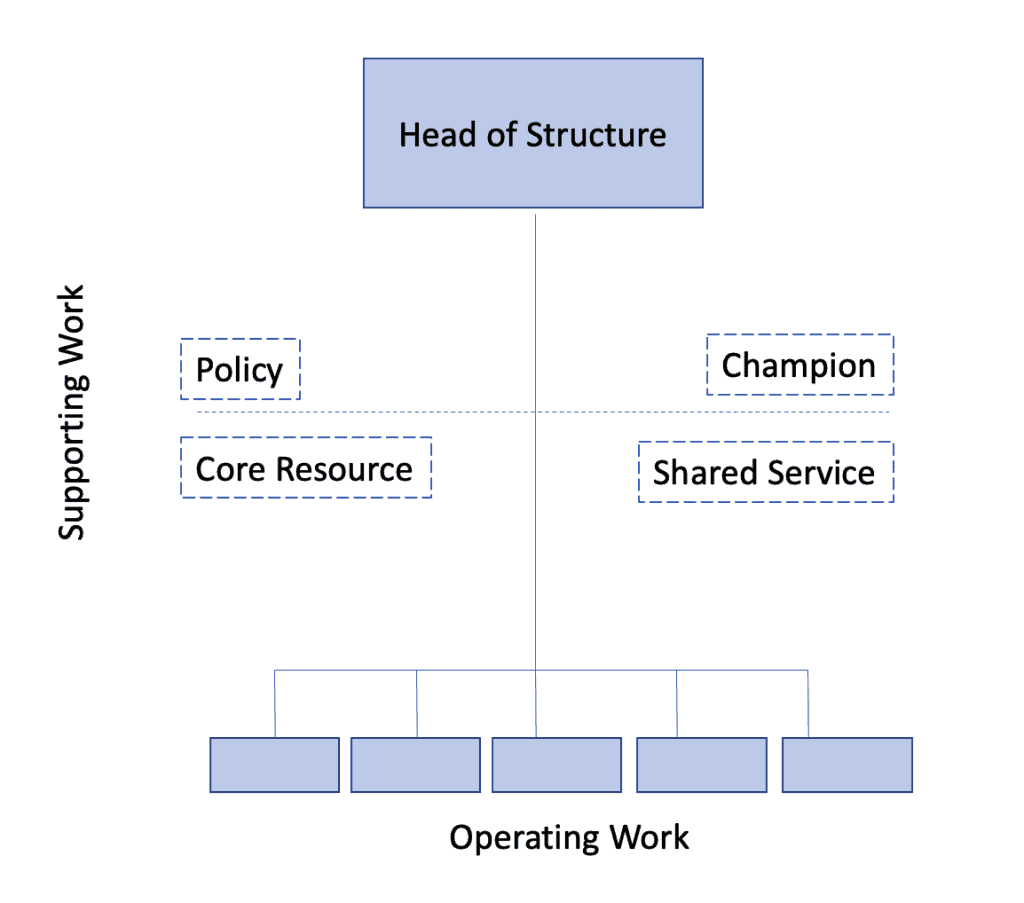
Organisational Model – Operating Work
There are different ways to structure the operating work including including the following organisational model types:
- Value chain.
- Matrix.
- Functionally-oriented.
- Market-oriented.
Value Chain
The operating work may be structured as a value chain – as a value chain of functions, where the functions need to work closely together to deliver the value.
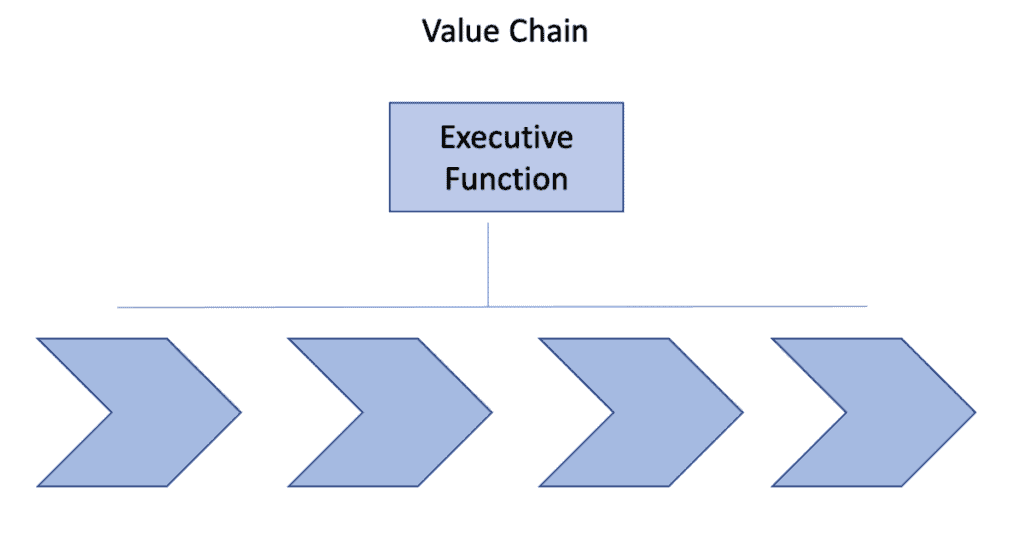
Matrix
The operating work may be structured as a matrix – as a matrix of units, where each unit can only be successful if it works closely with other units.
The Matrix Model: has separate managers for each functional area and for each product, service, or customer group. Employees report to a line manager, who is responsible for the performance of a type of work and for identifying opportunities for efficiency in the work, and to a market (or product, service, or project) manager, who is responsible for managing the product or service across multiple functional areas.
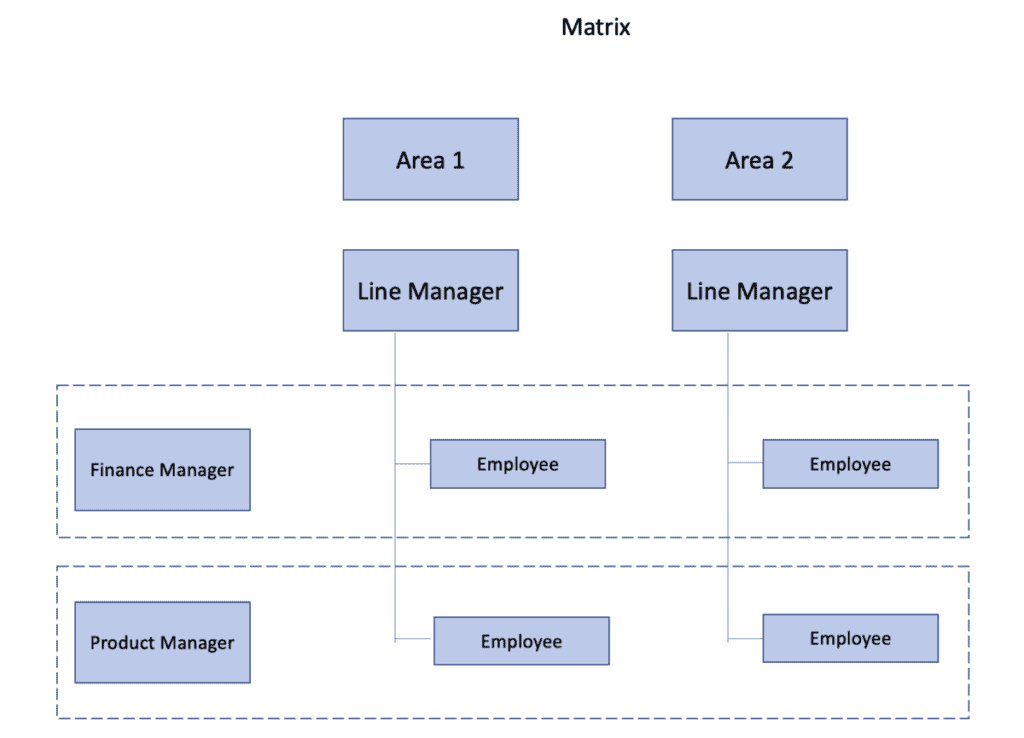
Functionally-Oriented
The operating work may be structured as functionally oriented – group staff together based on shared skills or areas of expertise and generally encourage a standardisation of work or processes within the organisation.
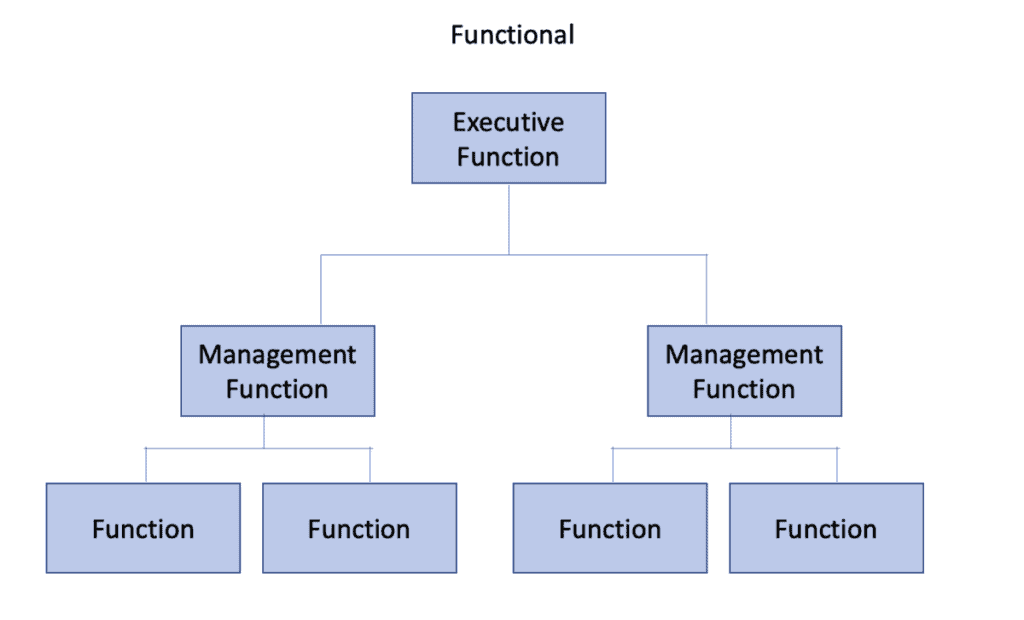
Market Oriented
The operating work may be structured as market oriented – may be intended to serve particular customer groups, geographical areas, projects, or processes rather than grouping employees by common skills or expertise.
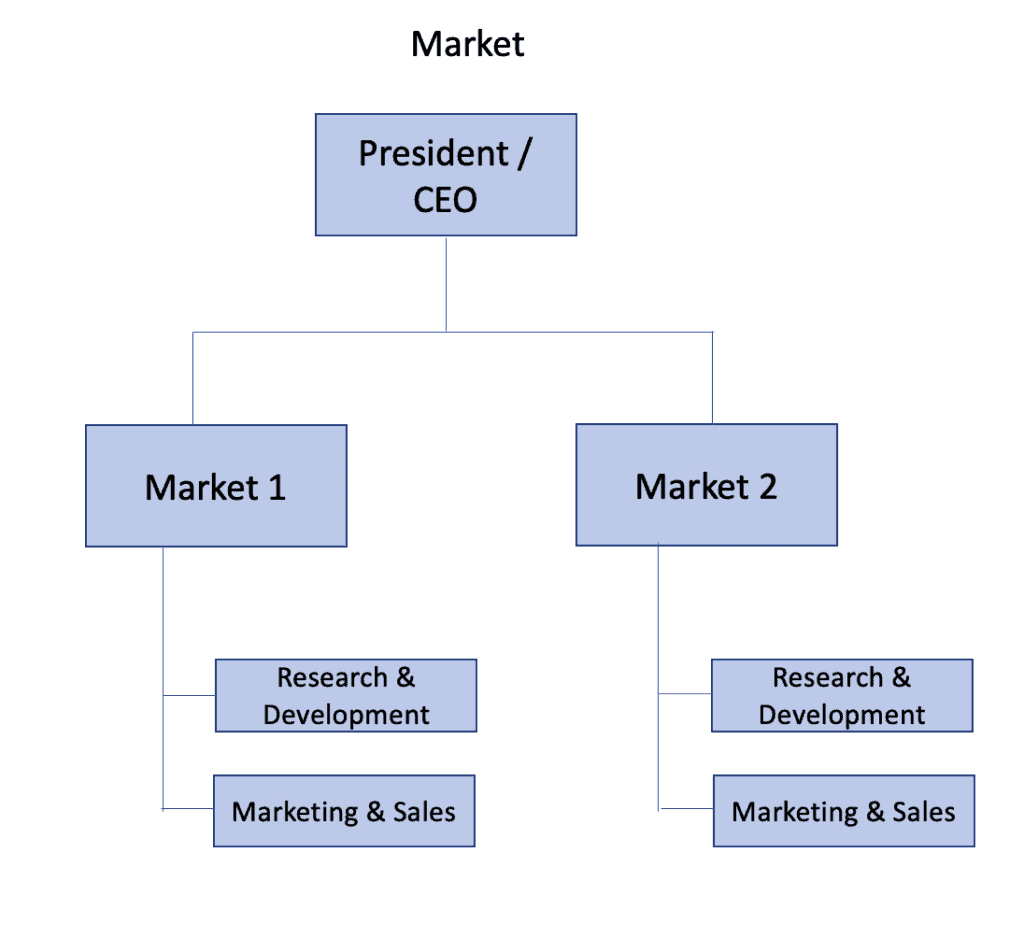
Benefits of Organisational Modelling
Organisational modelling can help to:
- Define the boundaries of the group.
- Determine the formal relationships between members.
- Assign a functional role to each person.
- Identify the interfaces between the unit and other units or stakeholders.
- Improve communication and decision making within the organisation.
- Increase efficiency by streamlining processes and eliminating duplication of effort.
Limitations of Organisational Modelling
Organisational modelling is not a perfect science, and there are some limitations to consider when creating a model for your business, including:
- The model may be too simplistic and not reflect the true complexity of the organisation.
- The model may not be flexible enough to respond to changes in the organisational environment.
- The model may be too static and not allow for growth or expansion.
- The model may be too detailed and not provide a clear enough picture of the organisation.
- The model may be too general and not specific enough to the needs of the organisation.
- Organisational models are sometimes out of date.

